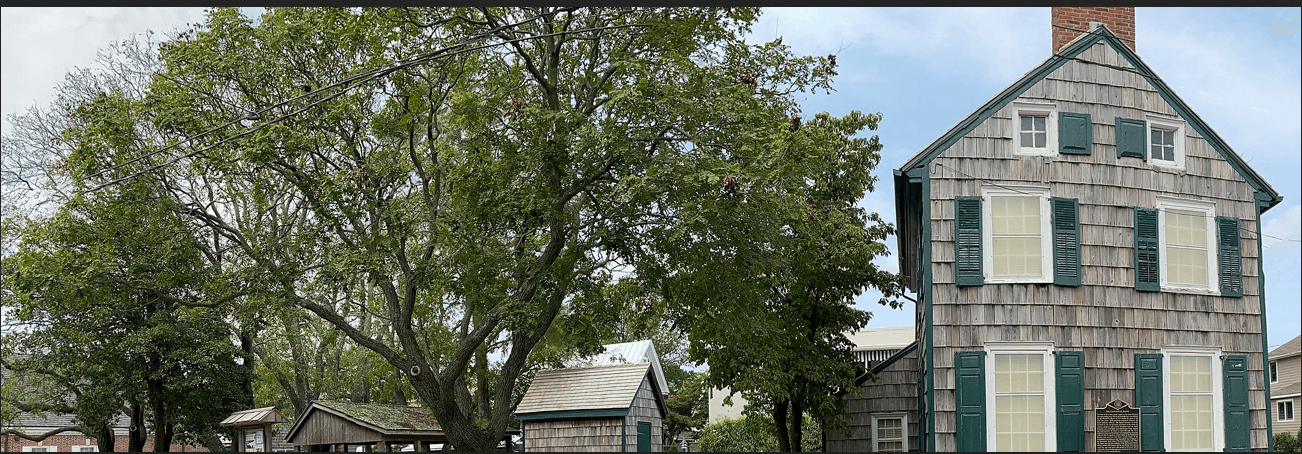
Near the canal in Lewes, Delaware, history is preserved and celebrated at the Cannonball House. While the historic home is now a maritime museum, it has a long and dark history, leading many believing the building is haunted by forces from when America was at war on home turf against the British in 1812. Originally a private home built in 1765, the fame and notoriety of the Cannonball House is tied to the moniker it’s been given, considering the fact that a real cannonball still sits embedded in the side of the building. A reminder of a time when war was all across the northern colonies and states in the fledgling country.

The cannonball sitting in the walls of the home did not damage its structural integrity, but that’s just the draw that brings folks to the museum to this day. In the first days of the war of 1812, a skirmish was happening at the canal directly next to the house, as the British soldiers kept the canal under siege. The cannonball was undoubtedly launched at the house during this battle, leaving its famous and lasting scar. The Cannonball House has had many identities through the years, serving as a restaurant, a laundromat, and a seamstress shop at different points in its existence.

Hauntings in the Cannonball House are reported every year, with some of the spooky interactions with the local ghosts leaving visitors at the museum with chills and an unsettling feeling inside the building. One particularly famous ghost is that of a woman from 1917, perpetually walking the room where her life ended in a painful and tragic way. The woman’s dress caught fire suddenly and the woman was consumed by the flames, succumbing to the flames and dying in the room before help could come. The same room is a hotspot for paranormal activity to this day.
The smell of burning fabric can be reported at some rare times in the Cannonball House, but the spirit has more poltergeist activity than full bodied apparitions. In the 1960s, during a renovation in the building, a worker distinctly kept his tools in a meticulous and orderly placement, but every morning he came back, they would be scattered all over the hardwood floor and the attic would be open. Finally frustrated with the constant moving of his tools, the man nailed the door to the attic shut. The next morning, he came back to find the nails ripped out of the door and his tools, yet again, splayed all over the room.

Others have reported hearing a disembodied voice on the staircase telling them not to go upstairs, where the tragic accident occurred. On one occasion, the voice said clearly to a group of tour guests “No, James is up there,” when they asked to see the third floor. No one is sure who exactly the man named James is in the home, but something about him made the other spirits issue a warning. Footsteps and screams are also heard throughout the house at various times, owing in part to the woman’s fiery demise on the premises.
Dozens of paranormal investigators have toured the home, attempting to contact either the unknown James or the seamstress who lost her life to her dress catching on fire. Some evidence collected include EVPs (Electronic Voice Phenomenon) and flashlight conversations with the woman. One industrious man showed his own burn scars to the specter, hoping to open a line of communication, and the activity seemed to increase after his revelation.
If you want to visit the Cannonball House you certainly can, but remember to be cautious. In October, the home is included in ghost tours and walks throughout the city of Lewes. With a little luck, you might catch a glimpse of one of the spirits of this iconic building from the 1812 war. You can also check it out in its current state, as a museum with tours held every day.
- About the Author
- Latest Posts

Born in Death Valley and raised on the prairie, Deborah is a Wyoming-based paranormal researcher and University of Wyoming graduate. Her interests lie in folklore, history, symbolic interaction and research. She also researches the paranormal academically and is a graduate student studying sociology.


